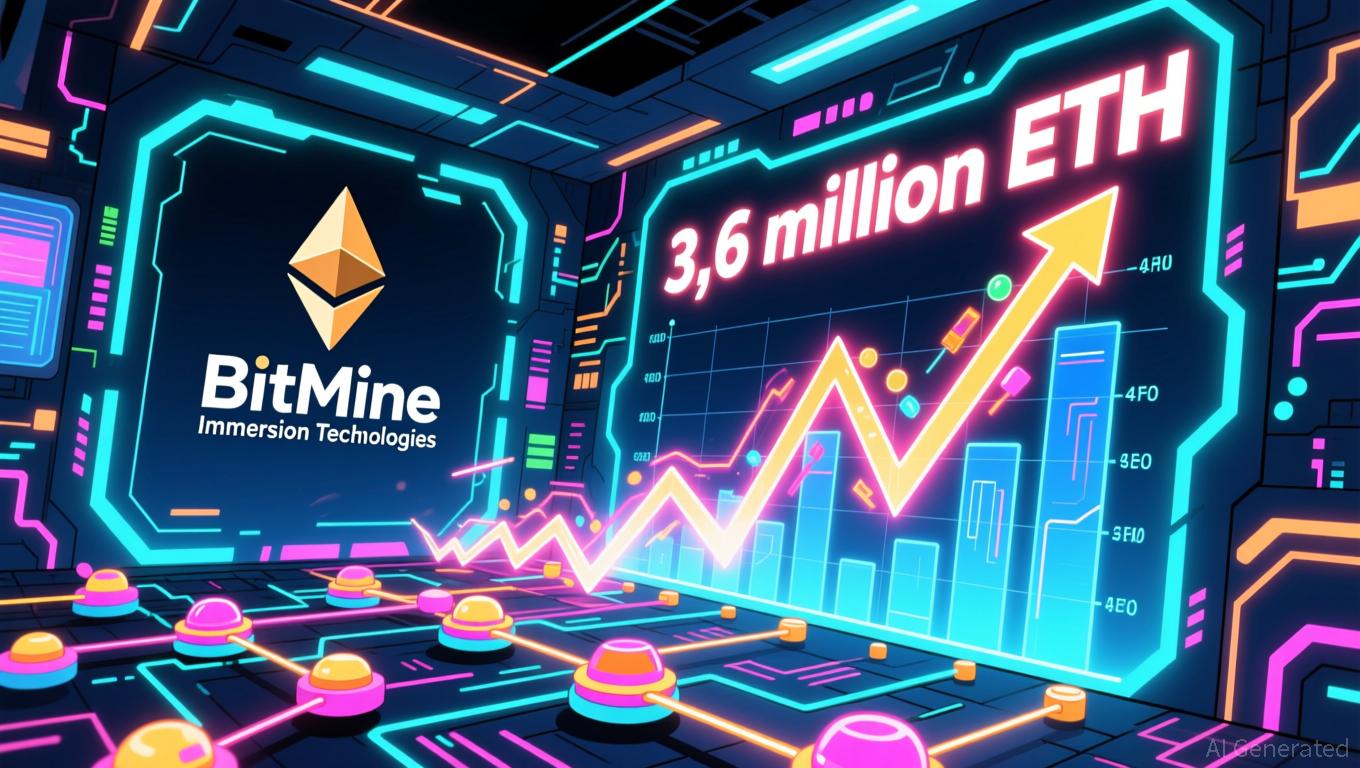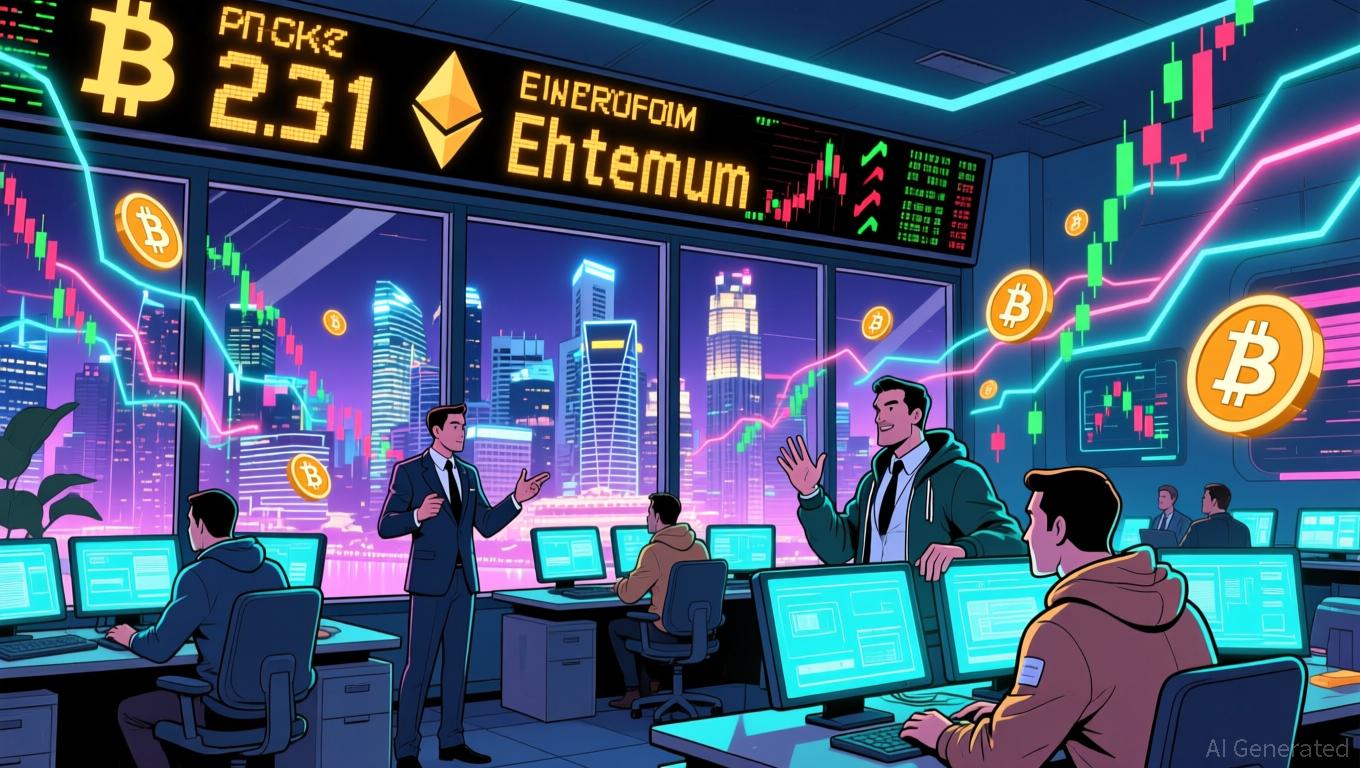CME Suspension: Global Market Vulnerabilities Revealed by Thermodynamic Constraints
- CME Group halted Globex trading on Nov 28, 2025 due to CyrusOne cooling system failure in Chicago, freezing 90% of global derivatives markets. - The outage caused erratic price swings in gold/silver and disrupted EBS forex platforms, exposing vulnerabilities in third-party data center reliance. - Despite post-holiday timing softening immediate impact, the incident highlighted systemic risks from thermodynamic limits in AI-era infrastructure. - CME faces pressure to build redundant systems as it expands c
CME Group Trading Halted by Data Center Cooling Breakdown
On November 28, 2025, CME Group—one of the globe’s leading derivatives exchanges—suddenly suspended trading on its Globex platform after a cooling malfunction at the CyrusOne data center in Chicago. This technical failure brought trading in futures and options for stocks, commodities, currencies, and digital assets such as Bitcoin and Ethereum to a standstill.
The disruption rippled through international markets, leaving traders without essential benchmarks for major indices like the S&P 500 and Nasdaq 100. Occurring just before 3:00 a.m. GMT, the incident highlighted how physical infrastructure vulnerabilities, rather than cyber threats or software errors, can jeopardize the stability of modern financial systems.
To protect its hardware, CME was forced to power down servers, effectively pausing 90% of global derivatives trading. This led to sudden and unpredictable price swings in key assets, including precious metals.

Gold experienced two rapid $40 sell-offs before rebounding, while silver dropped nearly $1 within minutes. Market participants described the event as a “nightmare,” noting that the outage intensified already thin liquidity following the Thanksgiving holiday and disrupted strategies for rolling positions. The incident also affected the EBS foreign exchange platform, halting updates for USD/EUR and USD/JPY pairs and causing bid-ask spreads to widen to twenty times their usual levels.
Underlying Vulnerabilities Exposed
This outage capped a turbulent year for CME. Despite achieving record crypto derivatives volumes—nearly 795,000 contracts traded in a single day on November 21, marking a 132% increase from the previous year—the event exposed the risks of depending on third-party data centers. CME had sold the affected facility to CyrusOne in 2016 and leased it back, a move critics say created a single point of failure.
Comparisons were drawn to a similar 2019 incident that halted trading for three hours, raising concerns about whether current cooling systems can handle the demands of AI-powered operations, which now account for 30% of annual U.S. energy consumption.
Market Impact and Future Challenges
Analysts observed that the outage’s timing—during a typically slow post-holiday period—helped limit its immediate effects. Jim Reid of Deutsche Bank remarked that the overnight disruption “hasn’t really been noticed” due to subdued trading volumes. Nevertheless, the event revealed systemic risks: a comparable failure during a period of high volatility could have far-reaching consequences across financial markets.
CME’s recent push into alternative cryptocurrency derivatives, including upcoming spot-quoted futures for XRP and Solana, adds further strain to its infrastructure.
Preparing for a More Demanding Future
Looking forward, CME faces increasing scrutiny to strengthen its systems. With plans to introduce round-the-clock crypto futures trading in early 2026, the recent cooling system breakdown highlights the urgent need for backup solutions and more distributed infrastructure. As global demand for data centers is expected to triple by 2030, financial firms must find ways to balance operational efficiency with robust resilience.
Despite these challenges, CME’s stock has climbed over 20% so far this year. Still, the incident serves as a powerful reminder that even the most advanced markets are not immune to the limitations of their physical environments.
Disclaimer: The content of this article solely reflects the author's opinion and does not represent the platform in any capacity. This article is not intended to serve as a reference for making investment decisions.
You may also like
Ethereum Updates: Tom Lee Wagers on $9K ETH, Challenging $4B in Losses with a '2017 Bitcoin' Strategy
- Tom Lee predicts Ethereum (ETH) could hit $7,500–$9,000 by 2026, supported by Fundstrat's $83M ETH purchase and BitMine's 3.6M ETH accumulation (3% of supply). - Despite ETH trading below $3,000 (vs. $3,120 average cost), Lee views the dip as a buying opportunity, citing Ethereum's "Wall Street blockchain" utility and tokenization trends. - BitMine plans to stake its 3.6M ETH via MAVAN for 4–5% yields, aligning with Ethereum's DeFi growth and Grayscale's first U.S. spot Dogecoin ETF signaling crypto's in

XRP News Today: ADGM's Green Light Boosts RLUSD as a Link Between the U.S. and Middle East
- Ripple's RLUSD stablecoin gains ADGM approval as UAE's first regulated fiat-referenced token, enabling institutional use in payments and collateral management. - With $1.2B market cap and 80% supply on Ethereum , RLUSD's adoption accelerates through transparent reserves and NYDFS compliance, bridging U.S.-Middle East markets. - ADGM's stringent framework attracts major institutions, positioning RLUSD as infrastructure-grade asset with 1:1 USD backing and third-party attestations. - Ripple expands regiona

Bitcoin News Update: Exchanges Compete With Crypto Perpetuals to Regain Importance Among Institutions
- Stock exchanges like SGX and Qatar bourses face pressure to adopt crypto perpetual futures (perps) to retain institutional relevance amid $187B+ global daily trading volumes. - SGX's Nov. 24 Bitcoin/Ethereum perps launch reflects traditional finance's integration with crypto, as $57.7B+ daily Bitcoin perp volumes outpace traditional offerings. - Gulf markets show mixed adaptation: Qatar's Ooredoo QPSC secondary offering contrasts with UAE's $5B+ in 2024 secondary sales, while China's property crisis expo

Ethereum Updates: ZKP Initiatives Rise While Ethereum's $3K Level and Dogecoin ETF Decisions Remain Uncertain
- Ethereum hovers near $3,000 as traders weigh technical levels and the Fusaka upgrade's potential impact on scalability. - Grayscale's Dogecoin ETF (GDOG) underperformed expectations with $1.41M first-day volume, reflecting cautious investor sentiment toward meme coins. - Zero Knowledge Proof (ZKP) projects see surging presale activity as investors seek privacy-focused alternatives amid crypto market uncertainty. - Ethereum's 37% drawdown from highs and DOGE's $0.1540 resistance highlight fragile momentum
